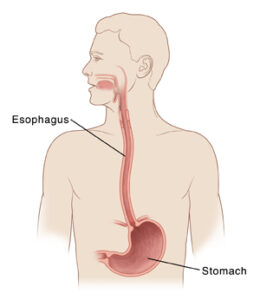Enema administration
An enema administration procedure wherein liquid is infused into the rectum via a tube either for treatment or to diagnose a condition.
Methods used in giving enemas
1) Using enema–can and tube: When large amounts of fluids are given in this method. e.g. Soap and water enema
2) Funnel and catheter method: When a small number of fluids are in this method. Eg: oil enema.
3) Drip method: When the fluid is administered very slowly in order to aid in its absorption. Eg: a nutrient enema.
Purpose of enema administration :
To Remove feces when the patient is constipated or impacted.
Used to softening feces, infuse oil into the rectum to help when the person is constipated or impacted.
To remove feces and cleanse the bowel preparation before examination
Removal of feces prior to a surgical procedure and prevents contamination of the surgical area.
To administer drugs such as corticosteroids dissolved in water to stop inflammation and bleeding caused by ulcerative colitis.
For introducing barium sulfate, a metallic chemical substance that outlines the intestines for diagnostic purposes.
To act as a carminative, or remove flatus, or gas, from the intestines.
To irrigate the colon or large intestine, thus stimulating peristalsis (sometimes called colonic irrigation).
Enema administration Indication:
Constipation
Abdominal distension
Dyspepsia
- Edema
- Loss of appetite
- Intoxication
- Obesity
- Watery diarrhea
General instructions for enema administration:
Use appropriate size rectal tube.
The rectal tube must be smooth and flexible with one or two openings at the end for the solution to flow. A tube with a sharp or ragged edge should not be used, because it may damage the mucus membranes of the rectum.
The rectal tube is lubricated with a water-soluble lubricant to facilitate insertion and decrease irritation of the rectal mucosa.
Use the solution at an appropriate temperature. High temperature can injure bowel mucosa and cold temperatures are uncomfortable for the client and may cause spasms of the sphincter muscles.
Instrument used
For Proctoclysis enema
Clean gloves
Lubricating jelly
Gauze pieces
Mackintosh
Proctoclysis enema
Kidney tray. For other types of enema
Clean gloves
Lubricating jelly
Gauze pieces.
Mackintosh.
Enema can with the complete set
Kidney tray
Required solution/medication prescribed.
Pint measure
IV stand
Bedpan or commode
Administration of enema -Procedure:
Assess the status of the patient’s last bowel movement/mobility.
Review physicians order
Explain the procedure to the patient
Assemble equipment near the bedside
Provide privacy
Place mackintosh under patient hip
Position patient on left lateral side with the right knee flexed
Cover patient appropriately and expose the rectum
Place bedpan or commode in an easily accessible position
Wash hands and wear gloves
For proctoclysis enema :
Inspect the enema solution for expiry date and do not use it if the seal is broken
Clamp the tube and break the seal.
Apply lubricant jelly over the tube and the nozzle.
Separate the buttocks of the client and instruct the client to take deep breaths and remain relaxed.
Insert the nozzle and the tube of the solution high in the anus and release the clamp.
Squeeze the bag to empty its content.
Ensure whether the patient feels the fluid in the bowel.
For other types of an enema:
Assemble enema can, tubing and the clamp and rectal tube.
Add 30 ml of soap solution in 500 ml of Luke warm water check the temperature of the solution and pour the solution into the can.
Hang the container on IV stand at 18 inches above the bed level.
Wash hands and wear gloves
Lubricate sides of the rectal tube with lignocaine jelly
Gently separate buttocks, locate rectum and insert rectal tube 4 to 5 inches by instructing the client to take deep breaths.
Hold the tube until the end of fluid has been installed.
Open regulating clamp and allow the solution to enter slowly.
Ensure whether the patient feels the fluid in the bowel. Explain that feeling of distension is normal.
Advice patient to retain the solution for 5 -10 min for a cleansing enema.
The enema is retained for longer (30- 60mins) or as advised by the doctor in case of oil retention enema
Clamp the tubing. Gently remove the rectal tube by pulling it through 3-4 layers of gauze.
Hold the gauze pieces around the tube and firmly against the anus.
Discard the Gauze pieces. Detach the rectal tube and place it in the Kidney tray.
Turn the patient on the back and assist him to the toilet, commode, or bedpan.
Observe enema results, noting the color, consistency, and amount. Obtain specimens if desired.
Bring the toilet tray and assist him with perineal care if needed.
Remove the bedpan, dry the patient, put on the garments, and change the bed linen if needed.
Keywords: Enema, Peglec, gastrointestinal lavage, barium enema, Fleet’s Enema, Polyethylene Glycol
Aftercare
Assist the client to the toilet to pass stool or provide a bedpan or commode to the client.
Ensure the client emptied the bowel completely.
Remove the gloves.
Wash hands.
Make the client comfortable.
Clean and replace the articles properly.
Document the procedure, date, time, and observations made.
Documentation
Document about the type & volume of enema given.
The color & consistency of fecal return & how the patient felt after the procedure.
Patient and Family Education:
- Explain the purpose of giving enema.
- Explain in brief how they have to co-operate during the procedure like lying in the left lateral position, taking deep breaths

